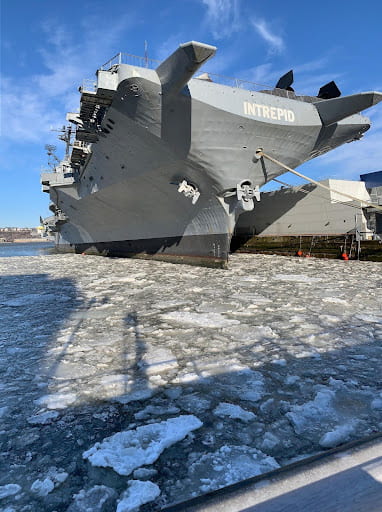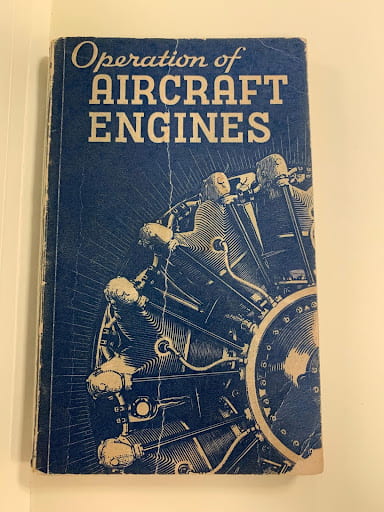This internship post was written by Aki Snyder, a 2020 graduate of the Archives and Public History MA Program.
 Sitting on the Hudson River at Pier 86 is the imposing aircraft carrier, the U.S.S. Intrepid. This Essex-class vessel weighs approximately 36,380 tons, measures 872 feet, and is able to carry 91-103 aircraft. The Intrepid was commissioned in 1943 and participated in the Pacific Theater of World War II. During her time in combat, she survived a torpedo strike and five kamikaze attacks! The Intrepid continued her service as a “cruise ship” during the Cold War, keeping tabs on the Soviets, and also saw combat in the Vietnam War. In addition to her military duties, during the 1960s, Intrepid served as a NASA recovery vessel. Intrepid was decommissioned in 1974. On August 4, 1982, the Intrepid, Sea, Air, & Space Museum opened to the public in New York City and has continued its mission to “promote the awareness and understanding of history, science and service through its collections, exhibitions and programming in order to honor our heroes, educate the public and inspire our youth.”
Sitting on the Hudson River at Pier 86 is the imposing aircraft carrier, the U.S.S. Intrepid. This Essex-class vessel weighs approximately 36,380 tons, measures 872 feet, and is able to carry 91-103 aircraft. The Intrepid was commissioned in 1943 and participated in the Pacific Theater of World War II. During her time in combat, she survived a torpedo strike and five kamikaze attacks! The Intrepid continued her service as a “cruise ship” during the Cold War, keeping tabs on the Soviets, and also saw combat in the Vietnam War. In addition to her military duties, during the 1960s, Intrepid served as a NASA recovery vessel. Intrepid was decommissioned in 1974. On August 4, 1982, the Intrepid, Sea, Air, & Space Museum opened to the public in New York City and has continued its mission to “promote the awareness and understanding of history, science and service through its collections, exhibitions and programming in order to honor our heroes, educate the public and inspire our youth.”
During my internship at the Intrepid, I processed their manuals collection. This collection consisted of 40 boxes containing a total of 679 manuals. This collection included manuals on every activity and item you could think of! I found medical manuals, weapons manuals (ex: how to use the torpedoes or how to use radar equipment), technical manuals (ex: how to fix the refrigerator or how to fix the movie projector), and even education manuals (ex: “Mathematics for Pilots” or “Physics for Pilots”). It was a very rich and interesting collection.
 To complete my project, I went through all 40 boxes, noting what manuals we had and by using TMS (“The Museum System” — Intrepid’s database of their archival materials) I was able to determine what manuals were missing. Next step was assigning each manual a category depending on their naval assignment. Finally, once all of my manuals were correctly categorized, I created a finding aid. Finding aids are resources for researcher to provide a basic overview of a collection, record group, or series.
To complete my project, I went through all 40 boxes, noting what manuals we had and by using TMS (“The Museum System” — Intrepid’s database of their archival materials) I was able to determine what manuals were missing. Next step was assigning each manual a category depending on their naval assignment. Finally, once all of my manuals were correctly categorized, I created a finding aid. Finding aids are resources for researcher to provide a basic overview of a collection, record group, or series.
I loved my time at the Intrepid and I left having learned a lot about the archives profession. I enjoyed being able to apply the concepts I learned in “Introduction to Archives” in a real world setting. The Exhibits team, which I worked under, is fantastic! They are a wonderful group of hardworking individuals and eager to teach. My time at the Intrepid taught me how to effectively and efficiently process a collection, basic preservation techniques, the importance of good organization, and most important, how to write a finding aid! I was also fortunate enough to gain a crash course regarding how to use TMS and ArchiveSpace (open source information management platform that allows archives to manage their archival content online.)